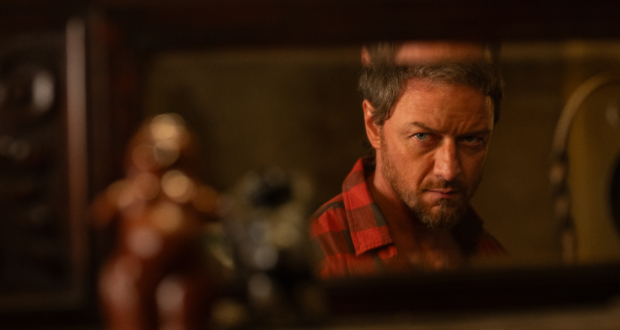Sitting in a Cinema watching a movie that has been showing for a good few weeks can be an annoying time. The 35mm print will have scratches, marks and cuts all through it and it’s sadly just to be expected. However, we’ve all seen the quality of digital pictures. On our PC’s, DVD’s, satellite and HDTV, so why not the Cinema?
There have small scale digital screenings, and most cinemas now have the ability to play DVD’s (usually for when you hire the screen for a movie or two of your own). The movie The Last Broadcast was streamed across the Internet to a select few Digital enabled Cinemas to play, and despite some technical hitches it all actually turned out okay, and that was 1998! So why are we still waiting?
The main issue appears to be format. Like any new technology all the major players run off and develop their own format, quite deliberately it seems, to pitch against each others, the winner reaps the spoils of worldwide licensing. So far the formats have been out there and no one has decided on the format to adopt or the technical specification to sign off against. This is much like the idea of THX certification for a Cinema’s audio facilities, the digital broadcast facilities must match this technical spec in order to reproduce the movies correctly.
With the Studios still trying to decide on the tech specs, Universal made a bold move. In a story from the Hollywood Reporter, Universal say they are confident that the specifications are close to being finalised, and Jerry Pierce, Senior VP Technology at NBC/Universal Pictures, went on to say:
“Universal has been studying d-cinema for the past 12 years and that, in his studio’s view, the DCI tech spec is ready and actionable. As long as an exhibitor’s projectors display imagery of at least 2K — and up to 4K — that are compliant with the specs being created by Digital Cinema Initiatives, Universal is ready to provide digital titles to exhibitors”
DCI is the group of seven Studios and the Society of Motion Picture and Television Engineers that are working together to create the Digital Cinema technical specifications and standards.
A few days later news leaked out from some financial organisation that Sony, Warner Brothers and Disney have combined to request a bid from major financials for the rollout of d-cinema (as they are calling it). So it would seem that even if the DCI haven’t announced that the standards are ready, it sure seems that the Studios have.
Another major stumbling block to date has been the installation costs, around �50,000 (UK Sterling) per cinema. Presumably this is being tackled by the major corporations above, but the smaller cinemas will find this upgrade harder and less cost effective. Will they be left behind in the move forward, and will we see a slow closure of these older cinemas?
The smaller grumblings have been around possible piracy and, believe it or not, quality. Trails conducted in Scotland recently have shown that (quite obviously) the quality is far superior and that the public have responded extremely well to it. A newspaper article in the Scotland on Sunday on the 31st October discusses the Scottish trials.
The Cameo Cinema in Edinburgh has been running tests with digital versions of various films, including In the Cut. Without the audience knowing, and with a 35mm version running ready, the digital version was shown with extremely positive responses. Hardly surprising I would have said, a trial here is not really needed for the audience, we know what to expect from Digital quality and we know the poor quality of 35mm movies.
A huge bonus for the movie production business is the cost of reproduction, currently to create a single 35mm print you require somewhere in the region of �1,000. The reproduction of a Digital version is considerably cheaper, once the infrastructure is in place, and this is the next step.
In Scotland, a publicly funded company called Docspace is pushing the new d-cinema technology and is helping Cinemas here make the transition from the more traditional methods and equipment. Currently on the d-list are the Glasgow Film Theatre and Edinburgh’s Filmhouse with equipment arriving this first week of November. Aberdeen’s Belmont Cinema and Dundee’s Contemporary Arts Centre will follow soon after.
There is another benefit to the production business is the possibility for more independant movies on a wider distribution. Whereas previously they would have had to find √جø¬Ω1,000 for each print, costs can be hugely reduced for them. Now, there’s the potential to have their movies screened in many different venues, all round the world, all at the same time using either digital reproductions or digital streaming. High definition digital video has also reduced the cost of filming drastically, and with these possibilities independant film makers may just get more of a chance at getting their movies out there.
Mr Moore would have had no problems with Farenheit 9/11 on US Election night if the d-cinema was commonplace.
For the moment though, the d-cinemas in Scotland will be using discs for all showings, however, it is hoped that movies will soon be supplied by cable, and therefore streamed from a central source and a central copy.
So what benefits are the audience likely to see? Well, we’ll get the higher quality picture for a start, no more messing up when the reels are swapped, and perhaps better audio. However, if you are expecting lower ticket prices because of the cost reductions in getting the movies to you, well think again. There has been no talk of lowering prices once d-cinema is in place.
So here’s to the coming weeks and months in Scotland, and the trials of d-cinema continuing. We just have to hope that this venture is joined up with the work of the Studios and the DCI, or we may be left sitting with an incompatible format, our Betamax to their VHS.



















